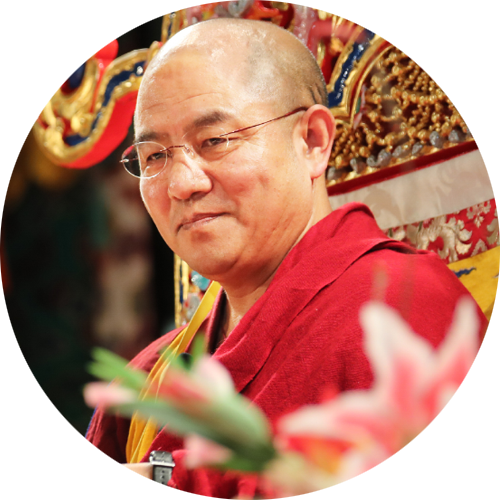89. Paramita of Meditative Concentration VI — Actual Practice of Meditative Concentration
Longchen Nyingtik Meditation 89
The Beginning
Assume the seven-point posture of Vairochana, take refuge, and arouse bodhicitta.
The Main Part
Your mind is free from concept and grasps onto nothing. Remain utterly undistracted in this state, calm, spacious, and at ease. While external phenomena manifest incessantly, in your being you give rise to meditative absorption devoid of reification or clinging.
Reminder
Since time without beginning, our mind has been rambling with all kinds of thoughts without a moment’s break. At long last we are now managing to calm it down, which necessarily entails a rough start. However, by training in and going through five stages of meditation [1] , slowly the mind can be tamed, becoming serene and peaceful.
When resting the mind, external phenomena still manifest in all their variety, yet you don’t grasp them whatsoever. This is called samadhi that abides in the inseparability of samatha and vipassana, a central practice exhorted highly in many meditation manuals. Even in the mundane world, the practice of sitting meditation affords modern people a respite to recover from pressure and tension-filled daily lives.
Many eminent Buddhist masters today shoulder heavy responsibilities; their endless daily tasks wear them out and exhaust them to no end. Nonetheless, these masters are good at reinvigorating themselves by sparing some time to do meditation in the morning and evening, from which they recharge their tired, agitated minds and bodies.
Here lies a critical message in regard to our mental health. A recent report warns about the rising statistics of sudden death in modern times, which in China alone claims 550,000 lives yearly, killing more than 1,000 people per day on average. What has caused this to happen? Tremendous fatigue and mounting pressure are to blame. Unable to cope, the victims simply snap unexpectedly.
In contrast, such a calamity has rarely happened to Buddhist masters and the monastic communities in general, even though they have to face many challenges as well. Contrary to popular belief, having hair shaved off does not mean being handed a license to loaf about. Actually, Mahayana Buddhists live a much more demanding life than most ordinary folks. You see, Mahayana doctrine calls for the deliverance of limitless sentient beings—humans, animals, and otherwise, which is a far cry from that of caring merely for one’s own family and job. That is, for devoted monastics, their pressure comes from having to care for countless sentient beings, rather than for just one or two individuals. Given this formidable job description, wouldn’t the monastics with a Mahayana aspiration overexert themselves and succumb to the sudden death syndrome? Not really. Instead, they live a much longer life, with some renowned masters going beyond 100 years. This feat attests precisely to the power of meditation.
The Ending
Dedicate the merit of your practice to all sentient beings.
[1] Five stages of meditation: first stage of meditation is called the experience of ‘movement, like a waterfall’; second, experience of ‘attainment, like a river flowing through a narrow canyon’; third, the experience of ‘familiarization, like a gently flowing stream’; fourth, the experience of ‘stability, like an ocean free from waves’; fifth, experience of ‘perfection, like a mountain.’ See The Sage who Dispels Mind’s Anguish for further details.
